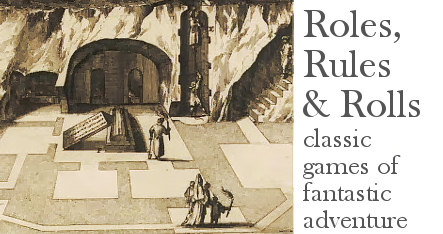Nope, not too much blogging this year. Running a weekly roll20 campaign, with all the statblocks and maps and nice looking tokens, takes time. But that has truly been epic, with an all-star international cast of players, deep dives into the history of the world Mittellus, intrigues of secret societies and sinister cults, a micro-sized delve into a beehive, coalition politics under the shadow of the notorious Razisiz, blue dragon of the wastes. I'm a little inhibited in posting all the tell-me-about-your campaign details, but we are having a great time.
 |
| AI depiction of Nura the Sandwalker, campaign PC |
Did I forget to mention that a lot of my writing on games has been scholarly long-form? Witness my contribution to the Fiend Folio special issue of Analog Game Studies, giving a definitive rundown of monster origins and arguing that if the FF is weird and science-fictional, so is the Monster Manual, we've just forgotten it.
Another long essay should come out next year in the Knock! zine. It's an ultimate user's guide to Jennell Jaquays' classic adventure The Caverns of Thracia, which in the guise of the ancient ruins of Nathrak has been entertaining my players over some ten sessions. Fortuitous timing, as I'm told the Kickstarted reprint of Thracia and several other Jaquays adventures will also release soon. In a Bronze Age campaign, the antiquities of Nathrak are Copper Age (Aztec x Barsoom).
 |
| Mike McKone, Dejah Thoris #1 cover |
Finally, I submitted a wasp's nest + petrified tree adventure to the One Page Contest, ran it at Dragonmeet London in early December, and am about halfway through to writing it up, as I've done with the aforementioned beehive. Will I mess around with an ant temple and create an insect colony trilogy? Wait and see!
These days, I run 5th edition D&D but still dream in old-school, with its quick combats, harder play mode, and most importantly its awareness of material existence in everything from economics to the need for supplies.
Anyway, I wish everyone a good celebration of the New Year and the space and safety to do more in-person gaming in 2022!





